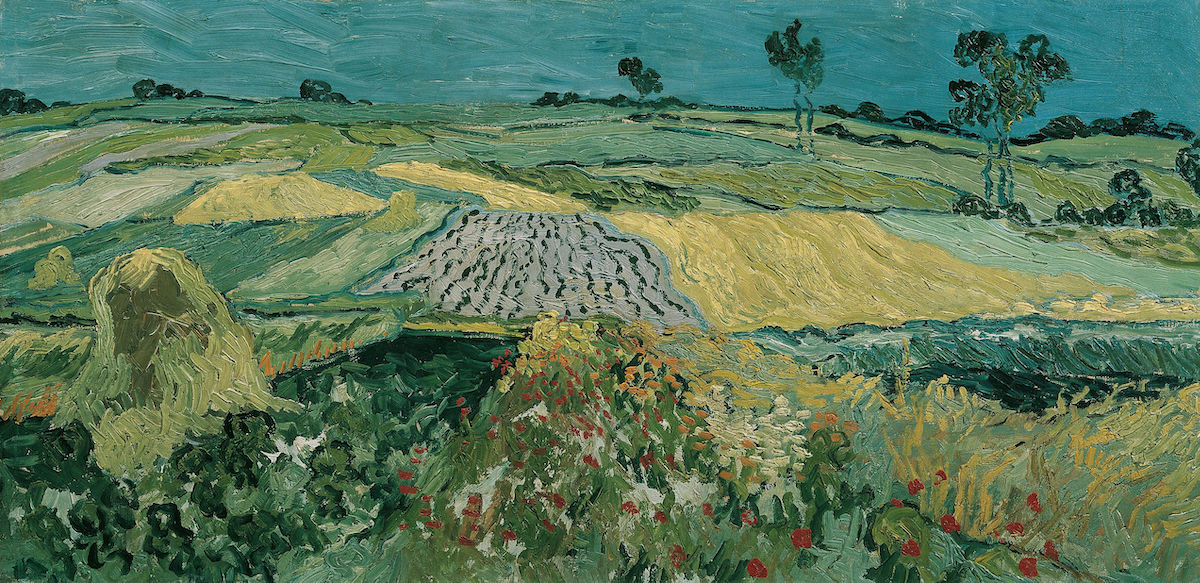Wheat Fields near Auvers 1888 by Vincent van Gogh

In May 1890, Van Gogh traveled from Saint-Remy to Paris, where he had a three-day stay with his brother, Theo, Theo's wife Johanna and their new baby Vincent. Van Gogh found that unlike his past experiences in Paris, he was no longer used to the commotion of the city and was too agitated to paint. His brother, Theo and artist Camille Pissarro developed a plan for Van Gogh to go to Auvers-sur-Oise with a letter of introduction for Dr. Paul Gachet, a homeopathic physician and art patron who lived in Auvers. Van Gogh had a room at the inn Auberge Ravoux in Auvers and was under the care and supervision of Dr. Gachet with whom he grew to have a close relationship, "something like another brother."
The outlying fields of Auvers, setting for Wheat Fields near Auvers, form a "zig-zag, patchwork pattern," of yellows, blues, and greens. In the last letter that Van Gogh wrote to his mother he described being very calm, something needed for this work, an "immense plain with wheat fields up as far as the hills, boundless as the ocean, delicate yellow, delicate soft green, the delicate purple of a tilled and weeded piece of ground, with the regular speckle of the green of flowering potato plants, everything under a sky of delicate tones of blue, white, pink and violet.".
In the last few weeks of his life, Van Gogh painted thirteen large canvases of horizontal landscapes of the wheat harvest that occurs in the region from the middle to late July, among them, his swan song Wheatfield with Crows.




















